Summary
In this episode, John Downes talks with Damien Lacey, founder of OE Partners; an expert in operational excellence.
Damien shares key insights from his experience with companies like Toyota and Bosch, outlining the critical steps for high value business transformation.
From setting a clear vision to aligning leadership and achieving small, quick wins, this episode provides actionable strategies to help businesses improve productivity and drive results.
Tune in to learn how to make lasting changes that can set your company apart from the competition!
[Download Resources Here]
Key takeaways:
1. Set a Clear Vision:
Successful transformation starts with a clear, ambitious vision. Begin with small steps, but keep the overall goal in sight to guide your team’s efforts. [Click Here To Learn More]
2.Align Leadership:
Leadership support is crucial. Ensure your leadership team is on the same page to effectively allocate resources and maintain focus on the transformation.
3.Focus on Quick Wins:
Achieving small, fast victories builds momentum and trust within the team, keeping everyone motivated and engaged throughout the transformation process.[Click Here To Learn More]
4.Use Data-Driven Decisions:
Rely on customer data to prioritise what truly matters. Understanding customer needs ensures that your transformation efforts align with market demand and deliver real value.
Highlights:
00:00 Meet Damien and learn the Lean approach to business
02:43 How to transform your business with clear goals and proven methods
08:10 Why strong leadership and vision drive real change
14:44 Get the right people solving the right problems
17:33 Build momentum with small, fast wins
20:19 Learn from success stories to fuel more change
22:51 Put your customers at the center of your transformation
27:17 Final thoughts and actionable #CriticalFewActions™
Sponsors – The CEO Masterclass
Are you consistently hitting or exceeding your business objectives, or are you stuck watching your business not deliver the full potential you know it’s capable of?
The CEO Masterclass has helped over 200 CEO’s and senior executives deliver an estimated
$65 million value to their businesses.
Limited spaces available – Click Here to learn more
Links and References
Follow me: LinkedIn | Instagram | Twitter | www.
Follow Damien: LinkedIn | FreeWebinars | www.
Damien Lacey – Interview Slides (Regent Caravans Lean Analysis & Transformational Planning)
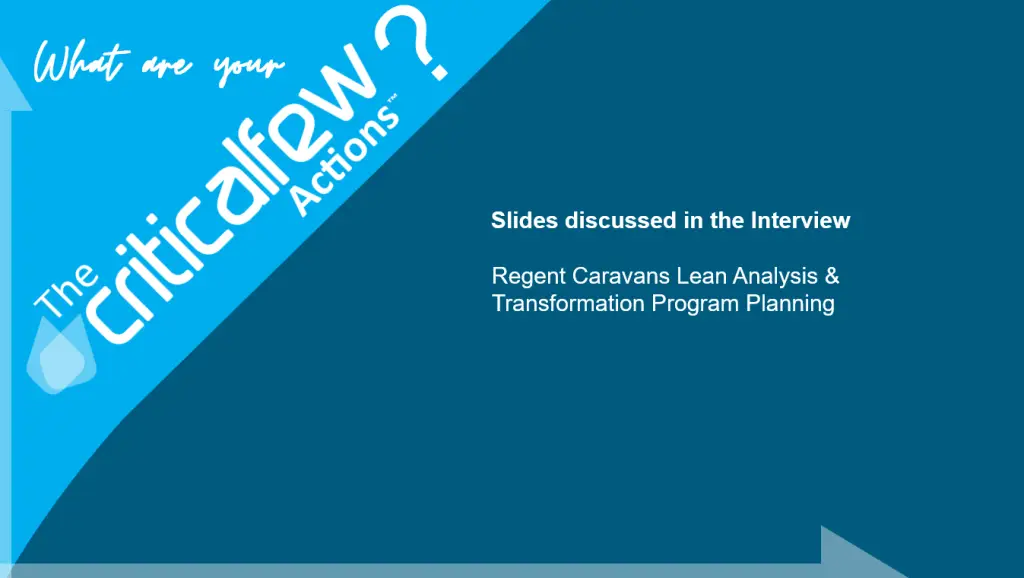
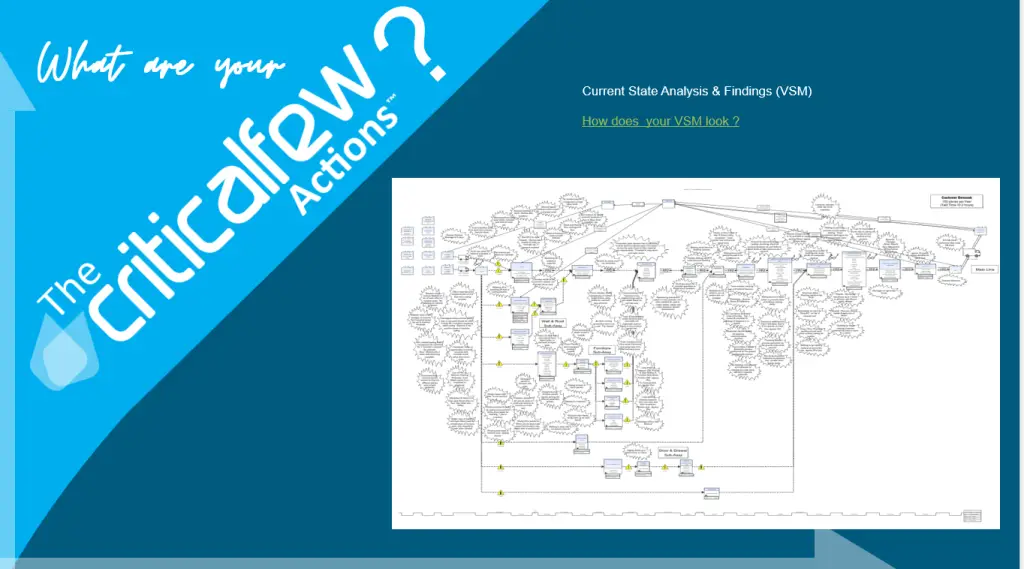

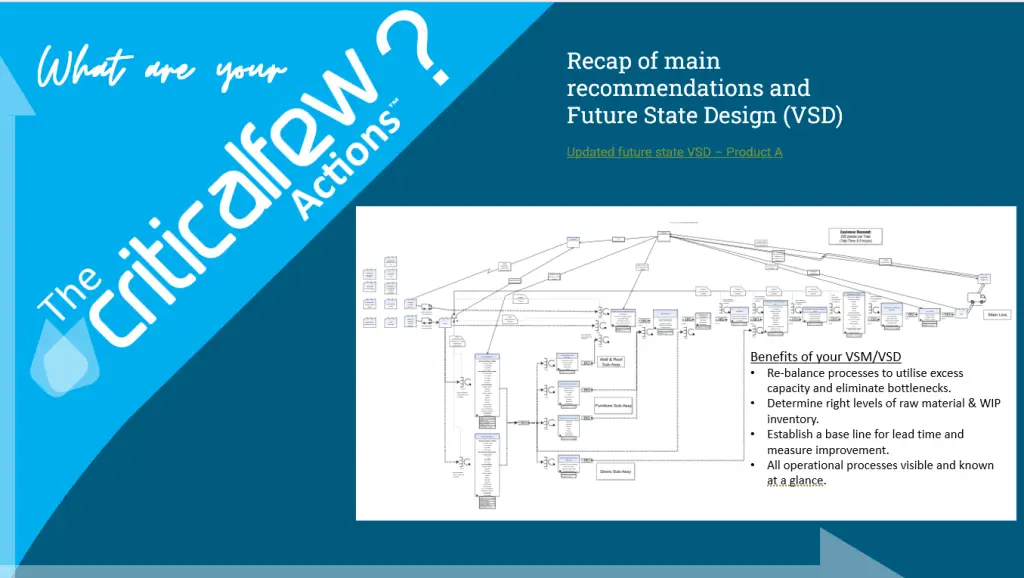
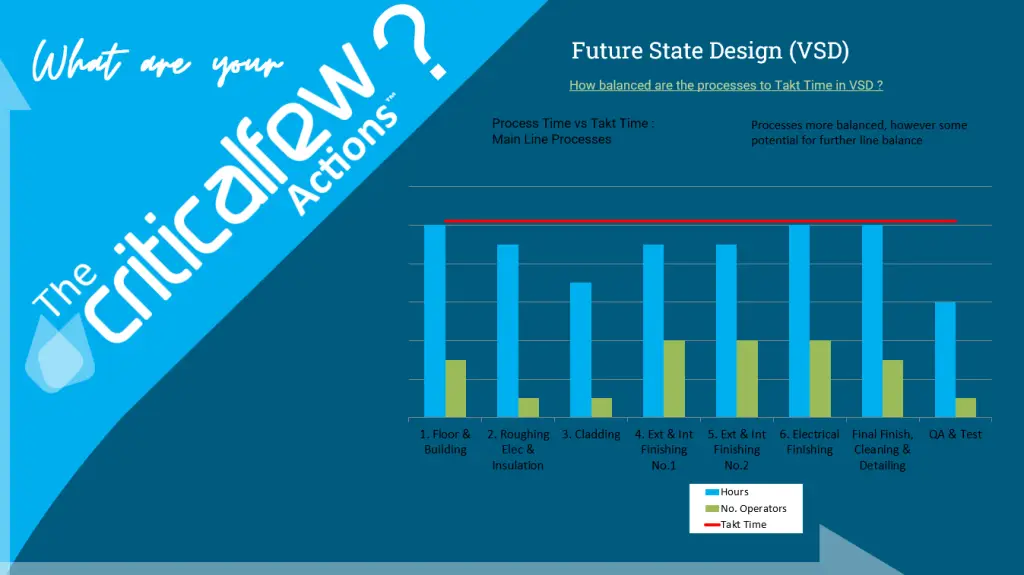
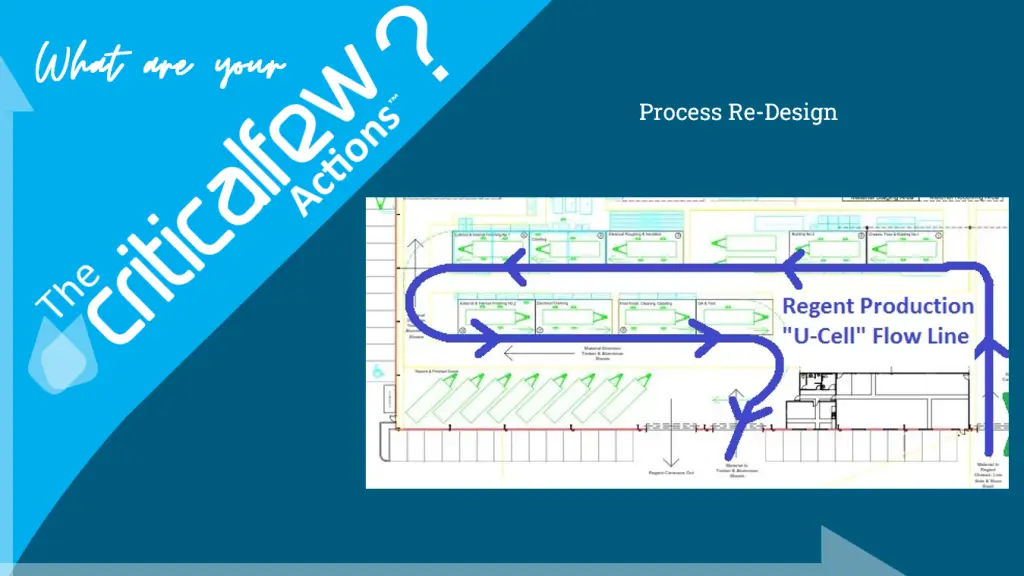
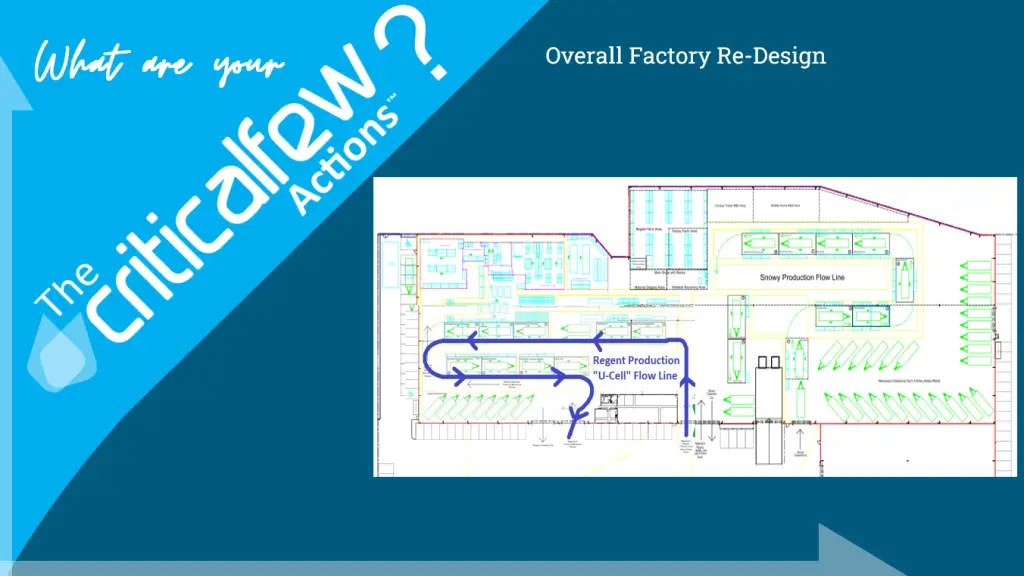
Lean – Five keys to a successful Business Transformation
JD: I’d like to welcome Damien Lacey to Meet the Expert. Damien’s been working in the lean manufacturing space and formerly with Toyota for many years now and he’s my go to guy when it comes to all things around organization, performance improvement. Damien, welcome.
G’day John. Thank you again for the opportunity to talk to you.
JD: I wanted to talk a bit about organization transformation. What are the tools that we can use? Perhaps you can just introduce yourself a little bit and then we can jump into, so what is this organization transformation thing?
I’m the owner of and founder of Bowie Partners. Always sense of operational excellence.
And so my experience with transformation and organizational improvement probably started in 2002, 2003, working with Robert Bosch, joined the Bosch product assistant team, which was a team put together to really shift the way the business operated. Lean transformation program. So really good experience to see a big shift in performance that came through a structured approach with these lean tools and methods kind of been hooked ever since.
And. A lot of the thinking and the tools and the methods came from Toyota. And so I was keen to learn from the source and spent a number of years working with Toyota here in Australia lived and worked in Toyota head office for about three years. So yeah, really good experience just to really be not just from a technical aspect, but also from, seeing a living culture, living and breathing culture around how do we.
Better performance out of everything we do every day. No, that, that was really good. So yeah we’ve grown to a team of of a client facing really helping client mainly Australian businesses improve their productivity. Fantastic.
JD: So Damien, what is organization transformation or business transformation?
Yeah good question. Cause the word transformation gets thrown around in a lot of things. different contexts. And all right, it’s all correct. But it’s good to understand what we’re actually talking about here. So Harvard Business Review produced a neat summary little while back, and it’s actually three distinct definitions.
The first one is an operational transformation. It means you’re doing what you’re doing now, but you’re doing it significantly faster, better, cheaper. And companies like Toyota, Procter and Gamble’s, they really are the masters of this. They are significantly more profitable than their competitors because they are able to transform their operations on a regular basis and stay ahead and really challenge the organization to work in different ways, in better ways.
I mean, they’re still making laundry powder in the case of Procter and Gamble and, Turd is still making cars. And you know what? The cars that they make are probably not the most exciting and the laundry powder is not the best exciting thing, but they just do it really well.
And that’s the way they compete. The second type of transformation is a transformation of your business model or your operational model. So you’re delivering the same service. But you’re doing it in a fundamentally different way. So for example, Netflix, they started by posting DVDs in the mail, in physical mail, people get a DVD in the post.
Obviously, they do it much differently. Now they provided by on demand streaming services through the Internet. And an Uber. Look, it is essentially a taxi service. But their delivery model was a lot more efficient than having to stand at a curb on a Friday night in the city trying to hail down a taxi and be grateful when you get there.
You’ve gotten, you got in there, so same service, but they’ve just done it in a completely different way. So that’s the second type of transformation. And the final trans type of transformation is really a whole scale strategic transformation. Okay. So really changing everything about the business in some respects.
So Amazon began life as a book retailer, an online book retailer. A lot more than that. Their reach has has changed in scale. The type of products that they handle is a bit different and their value offering is different. They’re in all sorts of things like cloud computing. So they’re very much a technology driven company.
Now Google started providing search services online. They’re now developing self driving cars. So they’re completely different in terms of who they are, what they do, which customer segments they serve. Now for most of our customers anyway the first type of transformation is going to be.
The most common and the most in line with what they need to achieve. We don’t all have the risk appetite or the budget to pull off a complete strategic transformation. So it’s most likely going to be. An operational transformation, doing what you’re doing now, but just doing it really better, faster, cheaper.
JD: I think you’re dead right. Most organizations can’t handle full strategic until they’ve actually got some really good runs on the board. They’ve earned the right to grow, as I like to call it. And I’ve also got some good financial backing to be able to take some big strategic risks. Doesn’t mean throwing the entire business model out.
It’s actually about incrementally changing that business. But it may well be they’re starting a new business.
Yeah, that’s right.
JD: As part of how they, they see themselves reinventing the business in the future. In fact, I’ve, I can think of one client now who for the last five years saw the demise of the industry that he’s in, and he’s been actually building new products and services to completely reinvent his business over a decade, which will see him be a market leader in Australia.
Yeah, fantastic. So where do we go from here? We could step through some, what we think are five key factors. So for success with regards to transforming your business there are more and you could argue which ones are the most and all that sort of stuff. But these are good five solid factors to get right to ensure that the business does a good job with transforming it.
Yeah. So I thought I’d talk through a couple of these.
JD: Let’s do that.
Okay, great. So look, yeah, let’s just go through them. The first one is, having a clear vision and a significant vision because it’s not improvement, it’s transformation, but then starting small and learning as you go.
Number two is getting, having a clear mandate amongst the leadership team and making sure everyone is on the same page and then the actions flow from that as a leadership group. Including, obviously the owner, the CEO, but then the direct leadership team around them getting the right people working on the right problem developing a trust cadence of frequent small achievements, so steps towards the goal to get everyone on the same page and proving that it’s happening.
And then we talk about lessons learned and stories and why that’s important. That’s why that’s important as part of the journey. It’s
JD: interesting. Every one of these is all about the people in the organization, isn’t it?
It all pretty much hinges on people at the end of the day. So the first one is really around vision.
And again, vision is one of those words that can feel really fuzzy, but it’s Getting clear on what is it that the organization is shooting for? And why is that important? So you and the other thing to say is, look, if this is your first goal as an organization you You’re going to have a big goal to aim for, but you can’t expect for the next 6, 12, 18 months or whatever the time frame is, to plan out your change program and have neat little steps and firm milestones all nicely laid out.
The businesses that achieve a step change are usually willing to accept a bit of uncertainty up front, but then rapidly start taking small steps towards that overall goal. So yeah, it starts with that clear vision. What does the business want to achieve? And why is that important? And we’ll go through a couple of examples a bit later on.
And then the business, yeah, kicks off small projects. You deliver quickly, learns from that, modifies the approach as they needed. Now, I mean, one, one initiative that sort of fits this bill and sort of rings in my mind is the time that I was sitting in in Toyota City in Japan in and the GFC hit, but the GFC hit, and that was really quite cataclysmic.
I’m talking to people in Australia wasn’t quite as dramatic an event, but really people were laid off. Factories were shut. There was, it was really, it was quite cataclysmic. And in that organization, they’d never, ever not delivered a profit for the last 70 years. That, that really is quite significant.
Every single year rain, how old the company posted a profit. Yeah, safe as houses. And now this is for the first time was going to post a big loss. And that was quite quite quite dramatic for them. And so quickly the goal was set. We need to cut operating costs something in the order of a billion dollars.
And in terms of why that was needed. That was pretty clear. Lots of people gonna lose their job. Changes, what do they do? Changes happen really quickly. New investments were cancelled. New I remember suspension projects I was involved in, they were cancelled. Factory output was dropped and everyone was given a cost cutting target.
Every region, every division, every department was giving a clear cost reduction target. You need to get, is it 10 or a hundred dollars out of your part of the pie. And the first step was for everyone now to start coming up with ideas on how to achieve that. So changes to production processes, changes to part design, consolidation of supply.
No one knew how long it was going to take. And on where exactly the savings would come from, but that didn’t stop activity from getting started straight away. And the modifier, the approach was modified as we went along. And yeah, it took a while, but the result was achieved.
So yeah getting clear on what it is you’re trying to achieve, why that’s important, but then just getting cracking with it really in small steps. Good. So now the next thing is around leadership. And as you can imagine that’s pretty important. And probably the most common reason that these change initiatives to get kicked off don’t necessarily get the traction that they originally wanted.
It’s really clear correlation. I’m an engineer and I always like to look at things in numbers and graphs. It’s really clear correlation, the higher the level of support and alignment with the leadership team and the higher the results. So it’s pretty, pretty linear. Now that doesn’t mean that the CEO or the business owner has to be out the front leading all of the initiatives and commanding and controlling and It’s in fact, it’s probably better that they don’t do that.
What they do need to do though, is provide the support that’s necessary. Okay. But what does that mean? If you’re kicking off some sort of transformation program, you still got business as usual. You’ve still got your customers that you need to talk to, orders need to be filled, fulfilled sales.
Still needs to be made. All that stuff needs to happen, right? And so your transformation program, it’s going to compete for attention, for money, for time, all that kind of thing. And so, resources are going to have to be allocated. Hang on. Stop that. Do this. Is it the team’s going to spend a day week on it or however many or maybe you’re actually going to take a few people out of the organization in the day to day backfill their roles with someone else.
Resources need to be allocated. Some people might be a little bit initially resistant to it. Oh, hang on. This is a bit different. I’m not used to really having to redesign the way we work. And I need some help To be encouraged. So reminding them of why it’s important.
And of course, some of those people won’t change at all. That’s right. You will encounter people who are just not going to change. And
JD: that clear commitment from leadership is absolutely vital.
Yeah, that’s it. To not let those people set the agenda, yeah. Hang on back. The whole organization. Yeah, that’s right.
Hang on. I don’t think this is a good idea. I don’t wanna do it. Tell me why we need to do it. . Yeah. Flipping that conversation, saying no, sorry. This is something that the organization is going to do. We are doing, this is why we’re doing it, and this is what we’re doing. And here’s your want to be a part of it or not.
Figure out how you can help.
JD: That’s it. Or maybe you may need to work with somebody
else. That’s right. And that doesn’t, does happen. And, uh, not a bad thing. On other occasions, the grumpy person who’s got lots of things to say sometimes it’s useful. They’re highlighting.
Hurdles that might happen with the change that do need to be factored in. That’s not a bad thing, but yeah.
JD: And sometimes the most change resistant, if you can swing them around, they can actually be the strongest advocate.
Yeah. They’ve got actually lots of ideas. It’s just. Sometimes the way they frame those ideas comes across as a little bit critical and negative, but in actual fact, no they’ve got good ideas, but maybe soften the delivery a little bit.
So absolutely, you need leadership support and participation. That’s, it’s not a lone superstar that, that does this. It’s a team effort and leadership is part of that team.
JD: So if it’s a lone superstar, it’ll probably fail.
That’s right. Pretty shortly afterwards.
Yeah. So yeah, just leading on from your point there around around people, it, it really does hinge on the success really does hinge on the involvement of people. Now to begin with, I would suggest that whilst you may be aware of some resistors situated in certain parts of this, let’s maybe put them to one side to begin with.
And work with the coalition of the willing. So these are your most capable people the people who naturally are interested in change and have got ideas around how to make things better. So they’re the people you probably want to gravitate to first. You can’t put the resistors to the, in the corner forever.
You will have to engage with them at some point, but at least in the beginning. You want to work with coalition to willing and also the other thing as well is that to be successful, you want to be solving the right problem and something specifically that attacks a known issue within the organization, and it’s tangible.
It’s important for everyone. For example, saying that. We want to be more efficient. We need to be more productive. That’s not going to cut it. All right. That’s too vague. You can’t really grab a hold of that and measure it and hold yourself to account that easily. So to give you an example from a client that we’re working with right now they’re in the construction industry.
They deliver a piece of the construction build that’s at the end of it. It’s so they are always under time pressures because construction projects quite often, I want this, I’m sure this won’t be a shock to people, run late. But the handover time is trying to always try to be maintained.
And so they’re always under pressure. Now, the transformation program we’re working on with them has a really clear goal to reduce their delivery lead time. It’s currently sitting about 29 days to turn a customer specification into a fabricated solution, delivered and installed on site about 29 days.
And the goal now is to get that down to seven days. That’s significant, right? That’s four times faster. And when that happens, that will absolutely blow their competition out of the water. Yeah, it really is. And they’ve got a great solution that has got global potential behind it. So when we frame the goal of the program around that target, everyone in the business gets it, if we talk to sales and say, Hey, we need your participation ideas around this.
Absolutely. What do we need to do? Because they know that if we can get a project turned around in seven days, they’ve got a lot easier job to sell it, right? Yeah. Yeah. And the finance team you’ve suddenly, improved cashflow because you’re turning projects around in with, seven days as opposed to 30 or thereabouts, they’re happy about it.
Manufacturing know that they need to, get faster and more efficient. They’ve got authority. To be able to make changes there behind. So everyone gets behind it because it’s really tangible. Yes, that’s definitely important factor as well. Yeah, very good. Now. The other thing is, yeah. The old elephant, right?
Um, it’s that analogy. You’ve got to start small. You’ve got to create a frequency of delivery that builds trust, built momentum in the organization, another common reason why programs stall will start to lose support because they don’t deliver benefits fast enough. Or they’re not large enough, so we can plan, we can strategize, we can analyze.
Okay, but you also need to start delivering doesn’t need to be perfect. Just get going. That’s what’s going to You can provide the momentum. It’s if you were doing a weight watchers program, not that I’m suggesting anything, John, but let’s say I signed up to weight watchers three months, I did everything.
I was told to add everything as per the instruction. I still didn’t lose any weight. Maybe I need to start looking at other options. This isn’t working. And it’s the same with your transformation program, like investing time, effort and energy, but you need to deliver. A little example of that is.
Working with the client, they had an initiative to get visibility and performance metrics in the operations and get the team knowing where they’re going and work in the right direction. Now it started by, the initial plan was let’s get an electronic dashboard to put it up in, in 10 different locations in the facility, let’s have that link to sensors.
We want sensors connect real time data and pull that in. We want cool data visualization software so that anyone can get in and drill down into a lot of detail. We want that valuable on the intranet so that anyone in the organization can see what’s going on at any one time. Great. Okay. Awesome. All that sounds fantastic, but it also meant that it would be months before the thing was up and running if we took all of that on.
So instead we started, that’s a good goal to aim for, but let’s get, what we did was actually get a whiteboard and start with some printed graphs out into the operations and got to the heart of it, which was. Getting the guys clear on how they’re performing, understanding the gap and problem solving to fix it.
That’s ultimately the benefit that we want to enjoy. So how do we get there as quick as possible? So we were able to do that, demonstrate good progress. So then when we did need budget and resource and time to digitalize it, okay, yeah, this is working, we want to do more of it. So a cadence of trust based on delivery is really important.
Early and often. Early and often. Yeah. That’s it. So one bite at a time. Yeah. Don’t order yourself and don’t order yourself. Another elephant while you’re in the middle of eating the current elephant , yeah.
JD: Which is also about focus, isn’t it?
Yeah. That’s it. Then the last factor is lessons learned, scaling lessons learned.
This is something that’s not often really talked about, but the lessons learned from within the organization are really powerful motivators for delivering more change. And I think people by and large, they learn best from other people’s stories. And those, the best stories around transformation will come from within.
Because I could go through, I’ve gone through a couple of examples today. And I could go through another bunch and that’s great. But the I would wager that the stories and the anecdotes and the examples that will have the most weight will come from within the organization. People really sit up and take notice from hearing from their colleagues within the business that they know of what worked, what didn’t work, what would they do differently?
They carry a lot of weight. And so you want to harness that effect as much as possible and actively think about how to facilitate that cross pollination of ideas and examples. Could be, we report on this in our management meeting, right? Best change initiatives has happened in the last month or start documenting these lessons learned creating cross functional teams to share these ideas.
Create some infrastructure to actually get it happening. And there’s a few reasons why you want to do that. It reminds everyone that change is happening. It creates inspiration within the organization and also helps develop a sense of teams as, okay, there’s a number of people on this and we’re all making some steps forward.
Yeah, this is something to keep going with. Develops that becomes so much more
JD: relatable for them to, Oh yeah. So Lucy’s actually been working on this and what a great result that team’s been doing as opposed to, Oh yes. And in Toyota, they did this we’re not Toyota,
we’re
JD: not General Electric, so being able to relate to it in their own environment is absolutely vital.
That’s right. It could be about creating some information boards within the organization. This is where the latest best change happens, right?
JD: Yeah.
Or just the leadership team highlighting when someone puts in that effort, these little initiatives to, to start the recognition around change will help.
Yeah, they’re top five, John. What do we need to do to really drive this? Where could we get started? What would be some first steps to make, I shouldn’t say this, but it is surprising how often, when we start working with clients around change and improvement, a lot of the focus is internal, we need to do this.
We need to do that. I think this, I think that, and it’s not automatically the case that we start talking to our customers when we think about change and transformation, I would recommend start with the customer. So really knowing what your customer wants most and. Your customer wants everything, right?
They want it to be cheaper. They want more features. They want to deliver it instantly. They want perfect quality, all those things. And I get all that. If you can zoom in on specifically what is most important. What do they really care about? And so for instance, that example I was talking about the client in the construction industry for them, they want everything, but really wanted to live it on time, fast, reliably that, pretty much is the main thing.
And price becomes less of an issue. That if you could get it to me on time as, and then I can finish the bill and hand it over, everyone’s winning. So for them, it was that, so yeah, if you can get clear on what it is. That your customer really cares about and differentiate to that you’re on a, you’re on a good start.
That can be done. So how do you do that? It can be done through conversations. It could be done, but I would recommend something a little bit more structured and analytical. You’re going to need to motivate yourself, going to clear some resistance, going to justify resources. So if you’ve got some good analysis, that’s good data behind it, you’re going to be more comfortable.
Maybe conducting some surveys, we do workshops. We do, um, customer journey workshops for customer discovery workshops for our clients. So get a group, get a small group of your customers together, give them some lunch, work, workshop. What’s most important really understand from the directly as opposed to just assuming some instances that’s not always possible and in some instances, we’ve conducted surveys.
So sending out some survey and getting a large amount of data back and then really distilling it distilling it out into some clear things that they care about. Another example is that was for a software company that we, we worked with. So they’re an Australian business, international presence, selling products all over the world.
They’ve got design and customer service centers scattered across different time zones. And just thousands, tens of thousands of customs. So obviously we can’t get them in a workshop over lunch, right? There’s too many of them. So we went down the survey path and we sent out the survey results and got the data really interesting thing was that for them, it came back clearly that It wasn’t so much about new products, new features.
It was, they liked the current products. It just wanted them to work well and bugs and defects. And those kinds of interruptions were just came back overwhelmingly clear from the data. And that really shifted the business as folks to say, hang on, maybe we don’t, we would currently spending 90 percent of the design belt resources on new features, new products.
And maybe 5 to 10 percent on fixing the current ones. And they really shifted that balance and saw a huge intake up increase in the retaining, in the retainment of customers. They knew they had quality problems. This wasn’t new for them. But because the data showed so clearly that this is what the customer really cared about.
That really convinced them that, oh, we need to shift and reallocate. And that got them the change that they wanted. Yeah. Without the data, without really understanding the customer, they wouldn’t have had the motivation internally to shift.
JD: Yeah. Look, it’s very easy, I think, for organizations to say, yeah, I know what the customer wants and this is gonna be great for the customer.
But at the end of the day. It really does need to be customer led. If you’re going to say that you’re a customer centric organization, if everything’s about the customer, if you haven’t spoken to them, then it’s not about the customer. It’s about you. Yeah, that’s right. Just getting out and talking to them, workshopping with them, having lunch, surveying them getting some customer insights, absolutely vital to get the most, those most in.
Important things. One of those critical few things that if I did nothing else would actually satisfy the customer. So speaking of which, what do you reckon I should be doing tomorrow? If I want to start my transformation journey, if I did nothing else, what one thing could I do
tomorrow? It would be exactly that.
Just start, let’s talk with, understand and quantify. What it is your customer wants and let that be the first step. Shift from, I think this and that we’ve got some internal opinions, however confident those opinions might be to something that’s a little bit more structured that’s got some numbers behind it.
That if we took the personality out of the person making the suggestion, would that would that analysis really stack up, getting some numbers and some structure around it so that’s what I would do. Survey your customers, go do it, do a focus workshop and really have some analysis and numbers to back your understanding of what they really want is that should be then to start of what it is you’re looking to transform to.
JD: Yeah. And perhaps even go out and actually see the customers and see how they’re using your product and service. Wonderful workplace. Yeah, absolutely. Thanks so much for your time. Great talking to you, John.
Thank you.
The #CriticalFewActions™ podcast including show notes and links provides general information only and is not individualized business advice nor can it be relied upon as such. You must take responsibility for your own advice, decisions and actions.